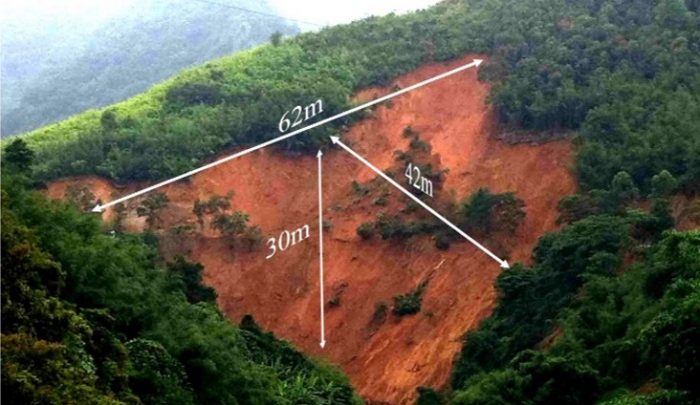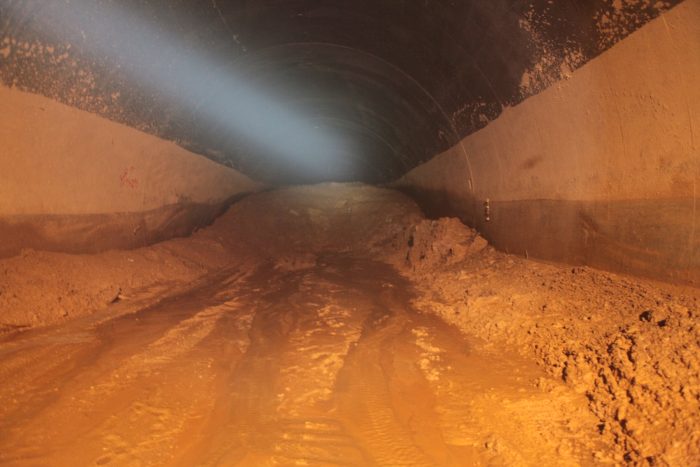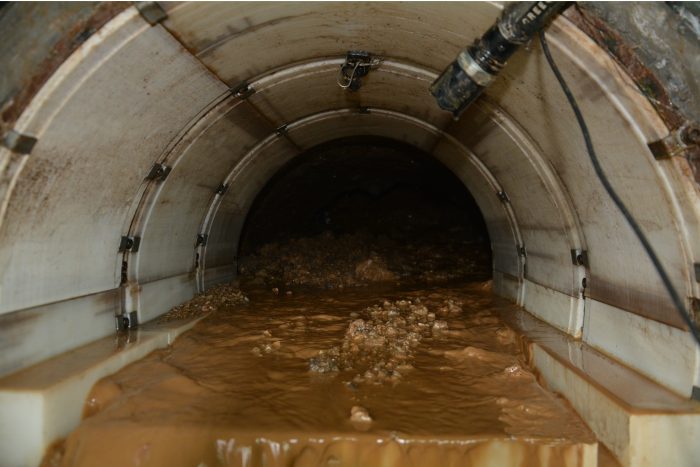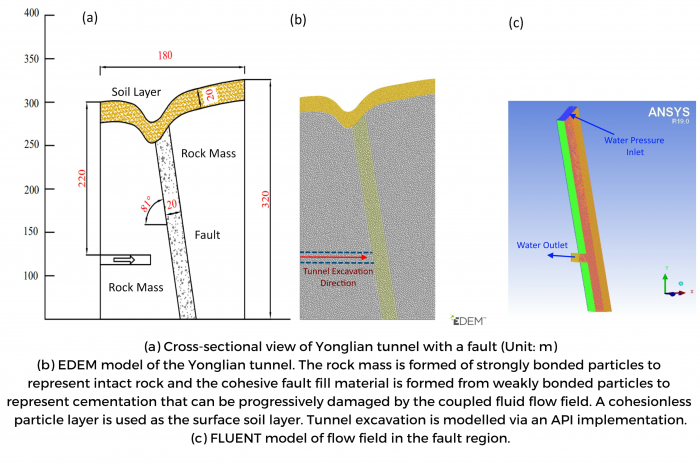- RESEARCHER
- Lin Bu
- INSTITUTE
- Shandong University, China
- DEPARTMENT
- School of Qilu Transportation
- SUPERVISOR
- Prof. Shucai Li, Prof. Ooi Jin & Dr. John P. Morrissey
- TIMELINE
- 12/12/2017 - 12/03/2020
Over 20,000 kilometres of railway, highway and water conveyance tunnels are being constructed in the mountainous areas in the southwest of China. Many challenging geological features such as faults and karst conduits exist and are likely to be encountered during tunnel construction, which can result in geohazards such as water and mud inrush. These geohazards have been known to cause serious economic losses and adverse social impacts and even casualties. An example of such a case is the Yonglian Tunnel collapse as shown in Figure 1 and Figure 2. To study such a problem is a significant challenge due to the many mechanisms to be captured: liquid migration, erosion and granular flow, to name but a few. A coupled DEM-CFD approach provides a powerful tool to study the phenomenon of water and mud inrush, considering the naturally discrete, inhomogeneous structure of rock mass and loose fill. Using an EDEM-Fluent coupling framework, this project aims to simulate and predict water and mud inrush hazards that occur during the tunnel construction process. Shandong University has significant expertise in the theoretical and experimental investigation of tunnel engineering. Experimental studies on the water and mud inrush process (Figure 3) provide excellent validation data for computational models and new insights on the geohazard evolution process to support the development of an EDEM-Fluent model of the Yonglian tunnel (see Figure 4 for details) in collaboration with the University of Edinburgh. Further high-fidelity models will provide useful insights to develop a better understanding of the phenomena underlying many geohazards experienced in the field of geo-engineering.  Fig 1. Significant surface collapse caused by water and mud inrush in tunnel under construction (Field Observation)
Fig 1. Significant surface collapse caused by water and mud inrush in tunnel under construction (Field Observation)  Fig 2. Water and mud inrush in Yonglian tunnel during construction (Field Observation)
Fig 2. Water and mud inrush in Yonglian tunnel during construction (Field Observation)  Fig 3. Model test for water and mud inrush in tunnel
Fig 3. Model test for water and mud inrush in tunnel  Fig 4. (a) Cross-sectional view of Yonglian tunnel with a fault (Unit: m) (b) EDEM model of the Yonglian tunnel. (Click for more details)
Fig 4. (a) Cross-sectional view of Yonglian tunnel with a fault (Unit: m) (b) EDEM model of the Yonglian tunnel. (Click for more details)
Water and mud inrush process evolution under effect of water pressure at the interface of the fault and soil layer
Velocity vectors of cohesive fault fill material entering into excavated tunnel
With a comprehensive set of contact models in EDEM, a computational model of rock and soil masses can be set up more easily. The API also provides the means to simulate the complex excavation processes involved in tunnel engineering. Most importantly, the coupling capabilities of EDEM with CFD allows us to simulate the evolution process of water and mud inrush geohazard during tunnelling, providing us a new insight into a difficult problem from numerical modelling.